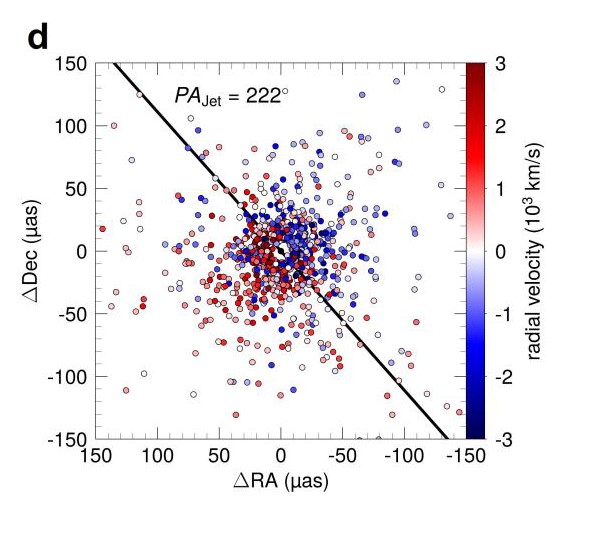Scientists estimate generally the mass of super massive black holes situated within galaxies by observing the motion of stars or gas clouds which are turning around them : roughly speaking, the faster they move, the more massive the black hole. In the case of distant galaxies, the direct measurement of the gas very close to the black hole had till now been impossible, since these regions were unobservable because of their small size. To estimate the mass of a black hole, astrophysicists have rather measured the time separating the emission of light from the immediate environment of the black hole and its reflection by the gas clouds, and so obtain the size of the gaseous structure and thereby the mass of the black hole. This method is referred to as « reflection mapping ».

In this new study, astrophysicists used the Gravity instrument of the VLT to penetrate to the very heart of 3C 273, the first quasar identified in the center of a galaxy at a distance of roughly 2,5 billion light years. Using an interferometric technique, the Gravity instrument combines the light gathered by the four VLT telescopes in Chile. This setup, which is equivalent to a 130m diameter telescope furnishes astronomers with a spatial resolution such that, for example, one could recognize a 1 euro coin on the lunar surface.
The observation of 3C 273 by Gravity has enabled one, to detect, for the first time, the motion of gas clouds rotating extremely close to the black hole within a quasar. With a radius of almost 4000 billion km, the observed structure rotates at a speed of thousands of km per second around an axis which corresponds to the jet of matter ejected by the quasar.

These results have enabled one to « weigh » the super-massive lack hole within the core of 3C 273. The mass, estimated using Gravity, turns out to be about 300 billion solar masses and is compatible with earlier measurements made via reflection cartography but is 100 times more accurate.
Gravity has thus validated the « reflection mapping » method to weigh super massive black holes, and moreover furnishes a new independent, extremely accurate, method to determine the masses of thousands of other quasars.
Référence
"Spatially resolved ordered rotation of a quasar broad line region at sub-parsec scale", GRAVITY collaboration : E. Sturm, J. Dexter, O. Pfuhl, M. R. Stock, R. I. Davies, D. Lutz, Y. Clénet, A. Eckart, F. Eisenhauer, R. Genzel, D. Gratadour, S. F. Hönig, M. Kishimoto, S. Lacour, F. Millour, H. Netzer, G. Perrin, B. M. Peterson, P.O. Petrucci, D. Rouan, I. Waisberg, J. Woillez, A. Amorim, W. Brandner, N. M. Förster Schreiber, P. J. V. Garcia, S. Gillessen, T. Ott, T. Paumard, K. Perraut, S. Scheithauer, C. Straubmeier, L. J. Tacconi, F. Widmann. Nature, 29 novembre 2018.
DOI : 10.1038/s41586-018-0731-9
